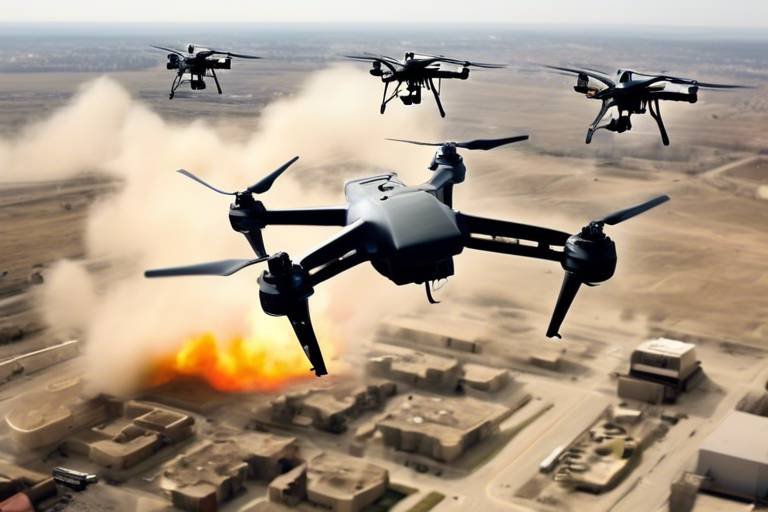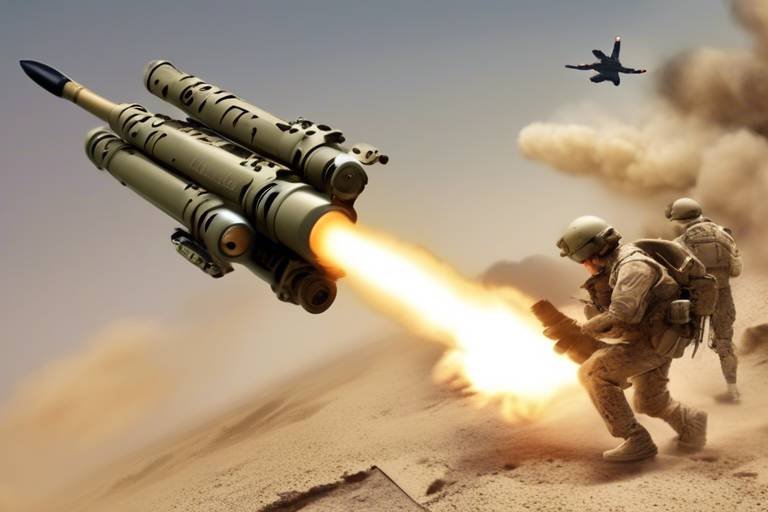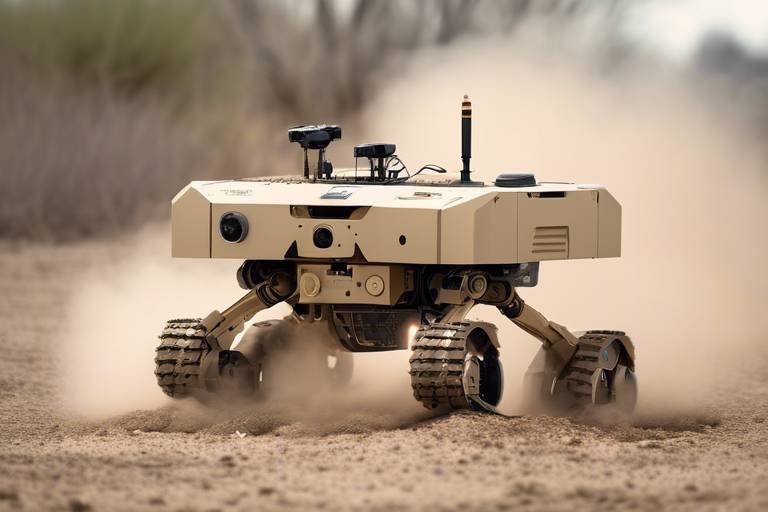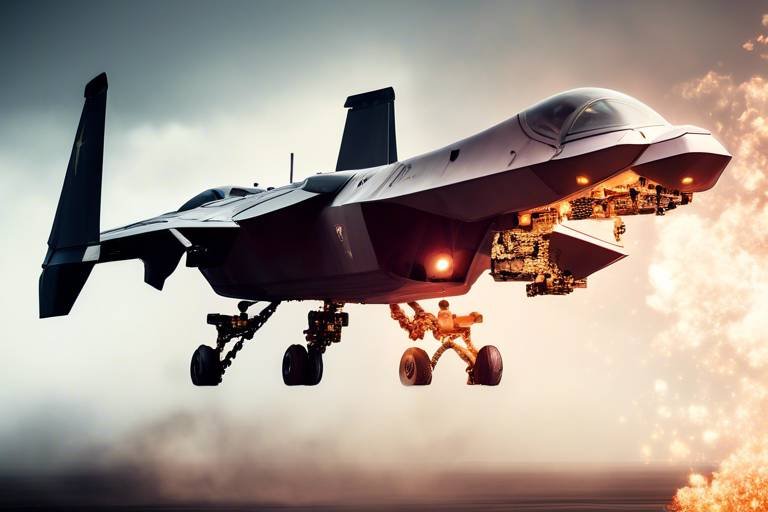AI-Powered Military Decision-Making Tools
The integration of artificial intelligence (AI) in military decision-making is not just a trend; it's a revolution that is reshaping the landscape of modern warfare. Imagine a battlefield where decisions are made at lightning speed, powered by sophisticated algorithms that analyze data more efficiently than any human could. This article delves into how AI tools are enhancing military strategies, improving operational effectiveness, and ultimately saving lives. As we explore this fascinating topic, you'll discover the profound impact AI is having on the armed forces worldwide, making them more agile and responsive than ever before.
AI-powered tools are designed to assist military leaders in making informed decisions based on real-time data and predictive analytics. These systems can process vast amounts of information from various sources, including satellite imagery, drone surveillance, and intelligence reports, to create a comprehensive picture of the battlefield. This enhanced situational awareness is crucial for military operations, where every second counts and decisions must be made swiftly to adapt to evolving scenarios.
One of the key advantages of AI in military decision-making is its ability to reduce human error. Traditional decision-making processes can be hindered by cognitive biases and the limitations of human perception. In contrast, AI systems rely on data-driven insights, minimizing the risk of mistakes. For instance, during a conflict, an AI tool could analyze enemy movements and predict their next steps, allowing commanders to adjust their strategies in real-time. This capability can be the difference between victory and defeat in high-stakes situations.
However, the integration of AI in military operations is not without challenges. As we embrace these technological advancements, we must also consider the ethical implications and potential risks associated with their use. Questions arise about accountability in AI-driven decisions, especially when it comes to lethal actions. Who is responsible if an autonomous system makes a mistake? These are critical discussions that need to take place as we move forward in this new era of warfare.
In summary, AI-powered military decision-making tools are transforming how armed forces operate, making them more efficient and effective. While the benefits are clear, it is essential to navigate the accompanying challenges thoughtfully. The future of military strategy will undoubtedly be shaped by AI, and it is crucial for military leaders to stay informed and prepared for this evolution.
- What are AI-powered military decision-making tools?
These are advanced systems that utilize artificial intelligence to analyze data and assist military leaders in making informed decisions quickly and accurately. - How does AI enhance situational awareness in the military?
AI enhances situational awareness by processing vast amounts of data from various sources, providing commanders with real-time insights into battlefield conditions. - What are the ethical concerns surrounding AI in warfare?
Ethical concerns include accountability for decisions made by autonomous systems, the potential for misuse of technology, and the moral implications of automated warfare. - Can AI reduce human error in military operations?
Yes, AI can significantly reduce human error by relying on data-driven insights rather than cognitive biases, leading to more accurate decision-making. - What challenges does the military face when implementing AI technologies?
Challenges include ethical implications, cybersecurity risks, and the need for comprehensive training programs for military personnel.

The Role of AI in Modern Warfare
In today's rapidly evolving battlefield, artificial intelligence (AI) is not just a buzzword; it's a game-changer. Imagine a scenario where military leaders can make split-second decisions based on real-time data analysis, predictive modeling, and enhanced situational awareness. Sounds like something out of a sci-fi movie, right? But this is the reality we are stepping into, where AI is transforming the way armed forces operate. From drone surveillance to automated logistical support, AI is enhancing every facet of military operations.
One of the most significant contributions of AI in modern warfare is its ability to provide enhanced situational awareness. Gone are the days when commanders relied solely on reports from the ground. Now, with AI-powered systems, they can access a wealth of information from various sources, including satellites, surveillance drones, and even social media. This wealth of data allows military leaders to create a more comprehensive picture of the battlefield, leading to more informed decisions. In essence, AI acts as a force multiplier, amplifying the effectiveness of military strategies.
Furthermore, AI plays a crucial role in automating processes that were once time-consuming and prone to human error. For instance, logistics operations, which can make or break a military campaign, benefit tremendously from AI algorithms that optimize supply routes and predict equipment needs. Imagine a logistics officer who can now focus on strategic oversight rather than being bogged down by mundane tasks. This shift not only improves efficiency but also frees up valuable human resources for more critical decision-making roles.
Another fascinating aspect of AI in military operations is its capability for predictive analytics. By analyzing historical data and current battlefield conditions, AI can forecast potential enemy movements and outcomes. This predictive power enables military strategists to prepare and adapt their tactics proactively, rather than reactively. Think of it as having a crystal ball that provides insights into the future, helping commanders stay one step ahead of their adversaries.
Real-time intelligence gathering is yet another area where AI shines. With the ability to process vast amounts of data from various sources, AI-powered tools allow for swift and informed decision-making during critical military operations. This capability is especially vital in fast-paced combat situations where every second counts. The integration of AI in intelligence operations means that decisions can be made based on the most current information available, minimizing the chances of surprise attacks.
In summary, the role of AI in modern warfare is multifaceted and transformative. It's not just about enhancing capabilities; it's about redefining how military forces engage with their environments. As we continue to integrate AI technologies, the potential for improved operational outcomes and strategic advantages becomes increasingly clear. The battlefield of the future is not just about firepower but also about the intelligence and insight that AI can provide.
- What is AI's primary role in military operations? AI enhances situational awareness, automates processes, and improves strategic planning, leading to more informed military decisions.
- How does AI improve decision-making in combat? AI analyzes vast data sets quickly, providing actionable insights that help military leaders make timely decisions.
- What are the ethical concerns surrounding AI in warfare? Ethical questions include accountability for decisions made by AI systems and the potential for autonomous weapons to operate without human oversight.
- Can AI be vulnerable to cyberattacks? Yes, as military systems become more reliant on AI, they face increased cybersecurity risks, necessitating advanced protective measures.
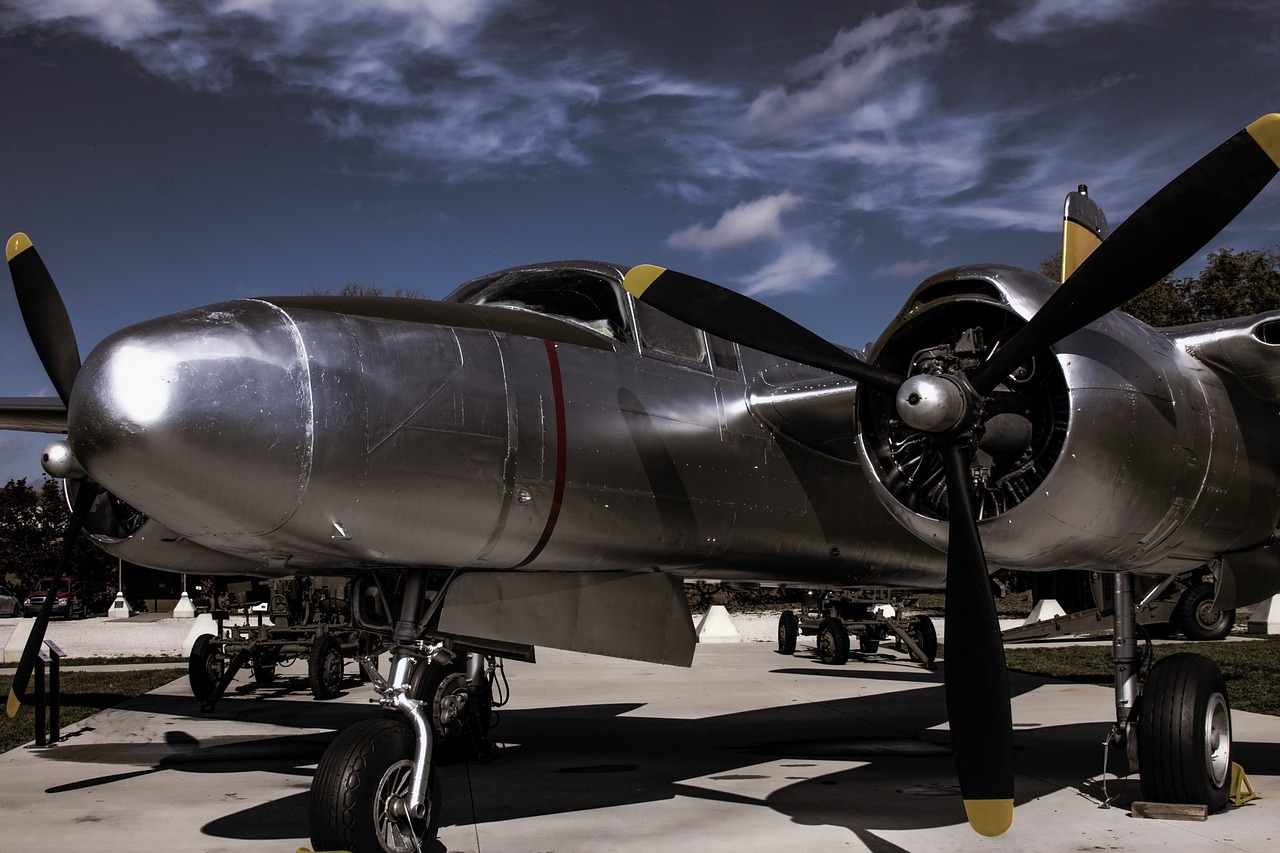
Advantages of AI in Military Operations
Artificial Intelligence (AI) is revolutionizing military operations by offering a plethora of advantages that enhance the effectiveness and efficiency of armed forces. One of the most significant benefits is the increased efficiency in various military processes. By automating routine tasks, AI allows military personnel to focus on more critical strategic planning and execution. Imagine a scenario where soldiers are bogged down by repetitive data entry or analysis; AI steps in like a trusty sidekick, handling the mundane while humans tackle the bigger picture.
Moreover, the integration of AI systems minimizes human error, which is crucial in high-stakes environments like the battlefield. For instance, AI algorithms can analyze data with precision that often surpasses human capabilities, ensuring that decisions are based on accurate information. This improvement in data integrity can be a game-changer when lives are on the line. The ability to sift through vast data sets quickly means that military leaders can access actionable insights, enhancing their decision-making processes.
Another remarkable advantage of AI in military operations is its capability for predictive analytics. By analyzing historical data and current trends, AI can forecast potential enemy movements and outcomes, allowing military strategists to prepare and adapt their tactics accordingly. This proactive approach is akin to having a chess master’s foresight, anticipating the opponent's moves before they even happen. With AI's predictive capabilities, military forces can stay one step ahead, making informed decisions that could alter the course of engagements.
Furthermore, AI-powered tools facilitate real-time intelligence gathering. In the heat of battle, timely information is vital. AI systems can collect and analyze data from various sources—satellites, drones, and ground sensors—providing military leaders with a comprehensive view of the battlefield. This real-time data collection enables swift and informed decision-making, which can be the difference between victory and defeat. Imagine being able to see the battlefield through multiple lenses at once; that’s the power of AI.
In addition to enhancing data analysis and intelligence gathering, AI also plays a crucial role in the automation of tactical decisions. By streamlining these decisions, AI reduces the cognitive load on military personnel. This means that soldiers can focus on higher-level strategic planning rather than getting bogged down in the minutiae of tactical choices. It’s like having a highly skilled assistant who handles the details while you steer the ship—allowing for a more effective and cohesive operational strategy.
In summary, the advantages of AI in military operations are profound. From increased efficiency and reduced human error to enhanced data analysis and real-time intelligence gathering, AI is transforming how armed forces operate. As military leaders harness these powerful tools, they are not just improving their strategies; they are redefining the very nature of warfare.
- What are the main benefits of using AI in military operations?
AI enhances efficiency, reduces human error, improves data analysis, and facilitates real-time intelligence gathering. - How does AI minimize human error in military decision-making?
AI algorithms can analyze data with high precision, ensuring decisions are based on accurate information. - What role does predictive analytics play in military strategy?
Predictive analytics allows military strategists to anticipate enemy movements and adapt their tactics accordingly. - Can AI improve real-time intelligence gathering?
Yes, AI can collect and analyze data from various sources quickly, providing timely insights during critical operations.
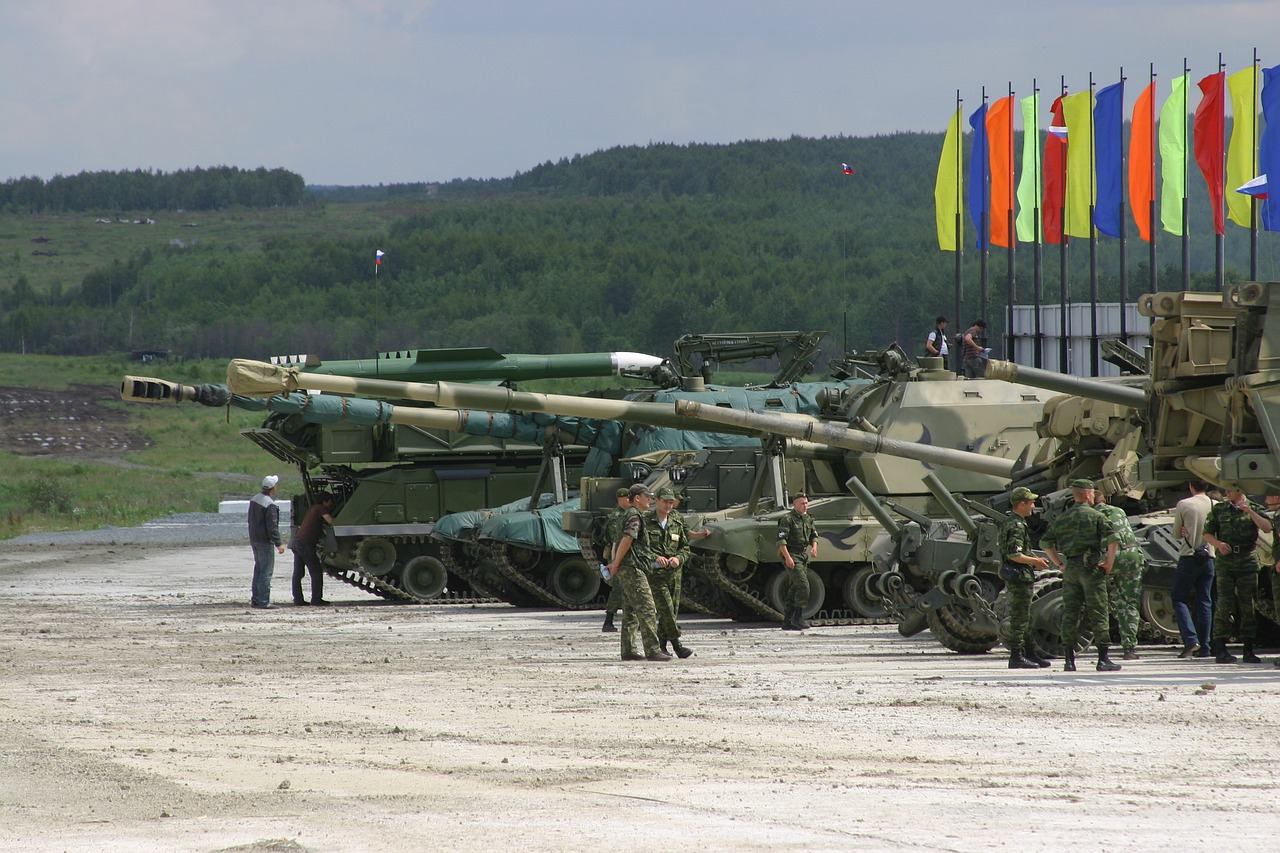
Enhanced Data Analysis
In the rapidly evolving landscape of modern warfare, the ability to analyze data effectively is paramount. Military operations generate an overwhelming amount of data from various sources, including satellite imagery, reconnaissance reports, and social media intelligence. Traditional methods of data analysis simply can't keep up with the sheer volume and velocity of information available today. This is where AI-powered systems come into play, revolutionizing the way military leaders make decisions. By leveraging machine learning and advanced algorithms, these systems can sift through terabytes of data in mere seconds, identifying patterns and extracting actionable insights that would take human analysts weeks or even months to uncover.
Imagine a military commander receiving real-time updates about troop movements, supply chain statuses, and enemy activities all at once. With AI, this isn't just a dream; it's a reality. These systems can highlight critical information, such as potential threats or opportunities, allowing commanders to make informed decisions swiftly. For example, an AI tool might analyze social media chatter and detect a sudden spike in discussions about military mobilization in a particular region, alerting commanders to a potential threat before it escalates.
Moreover, the use of AI in data analysis extends beyond just situational awareness. It can also enhance strategic planning. By employing predictive modeling, military leaders can simulate various scenarios based on historical data and current intelligence, which allows them to evaluate the potential outcomes of different strategies. This capability is akin to having a crystal ball that not only shows possible futures but also helps in crafting the best path forward.
To illustrate the impact of enhanced data analysis through AI, consider the following table that outlines some key benefits:
| Benefit | Description |
|---|---|
| Speed | AI can process data in real-time, providing immediate insights for decision-making. |
| Accuracy | Advanced algorithms reduce human error, offering more precise data interpretation. |
| Scalability | AI systems can handle vast amounts of data, adapting to the growing information landscape. |
| Predictive Capabilities | AI can forecast future trends based on historical data, aiding in proactive decision-making. |
In conclusion, enhanced data analysis through AI is not just a technological advancement; it is a game-changer for military operations. By transforming how data is processed and interpreted, AI empowers military leaders to act decisively and strategically, ultimately leading to more successful outcomes on the battlefield. As we look to the future, the integration of these advanced tools will undoubtedly shape the way military forces operate, interact, and respond to emerging threats.
- What is the primary advantage of using AI in military data analysis?
The primary advantage is the ability to process vast amounts of data quickly and accurately, leading to more informed and timely decisions. - How does AI enhance predictive capabilities in military operations?
AI uses historical data and current intelligence to forecast potential future scenarios, helping strategists prepare for various outcomes. - Are there any risks associated with AI in military applications?
Yes, there are ethical concerns, cybersecurity risks, and the need for proper training to ensure AI systems are used responsibly and effectively.
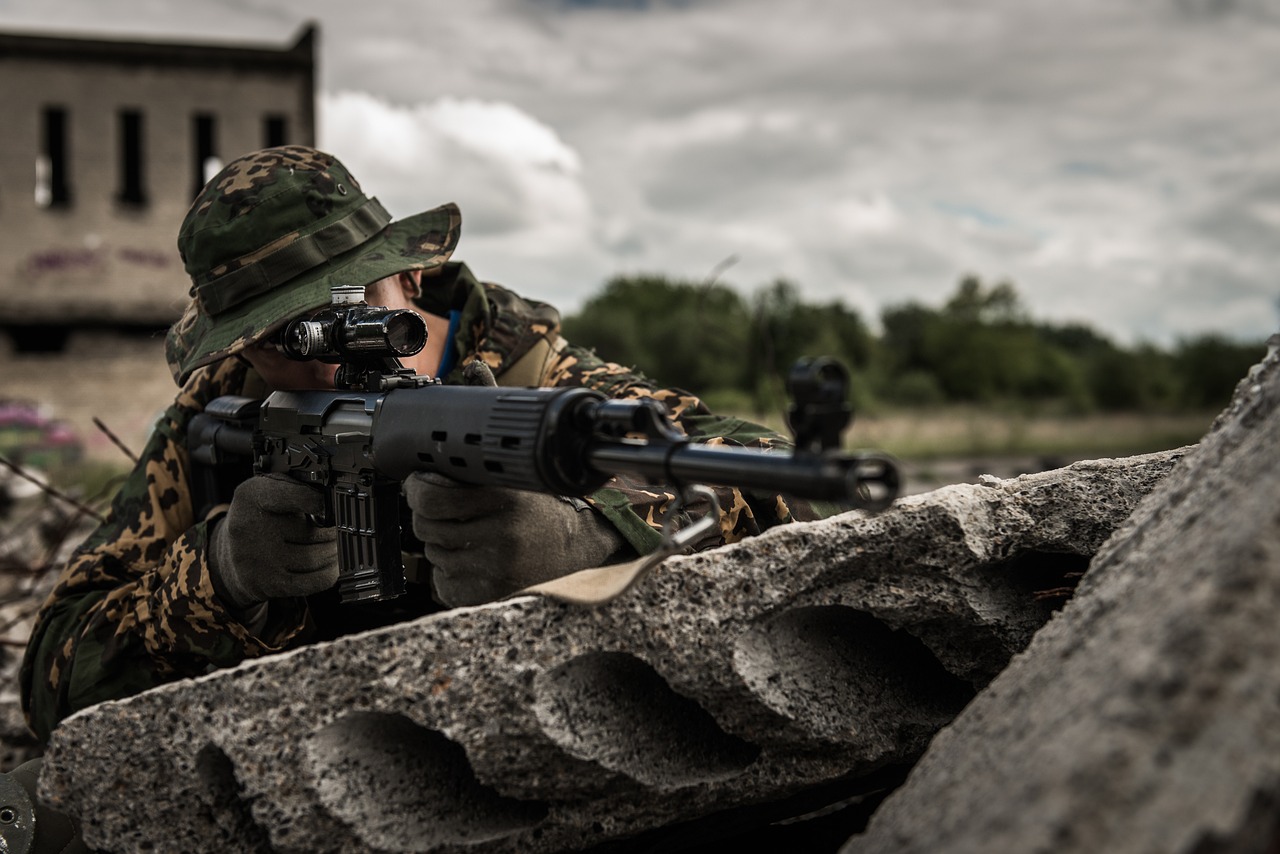
Predictive Analytics in Combat
In the ever-evolving landscape of modern warfare, the use of predictive analytics is becoming a game-changer for military strategists. Imagine having the ability to foresee potential enemy movements before they even occur—this is the power that AI brings to the table. By analyzing historical data, troop movements, and even social media activity, AI algorithms can identify patterns and trends that human analysts might miss. This predictive capability allows military leaders to make more informed decisions, ultimately enhancing their tactical advantage on the battlefield.
One of the most fascinating aspects of predictive analytics is its ability to simulate various scenarios. Think of it as a high-stakes chess game where each move is calculated based on the opponent's possible reactions. Military planners can use these simulations to test different strategies and outcomes, enabling them to prepare for a range of combat situations. This proactive approach not only saves time but also minimizes the risks associated with reactive decision-making.
Moreover, predictive analytics can help in resource allocation. For instance, if data indicates a high likelihood of conflict in a particular region, military resources can be deployed preemptively, ensuring that forces are in place before hostilities begin. This kind of foresight can lead to quicker response times and potentially avert larger conflicts.
However, it’s essential to recognize that predictive analytics is not infallible. While it can provide valuable insights, it relies heavily on the quality and accuracy of the data fed into it. Inaccurate data can lead to flawed predictions, which could have dire consequences in a military context. Thus, integrating human oversight with AI-driven analytics is crucial to ensure that decision-makers are not solely reliant on algorithms.
In conclusion, the integration of predictive analytics in combat scenarios represents a significant leap forward in military strategy. By harnessing the power of AI, armed forces can enhance their decision-making processes, optimize resource allocation, and ultimately gain a strategic edge over adversaries. As we continue to explore the capabilities of AI in warfare, the importance of maintaining a balance between human judgment and machine intelligence cannot be overstated.
- What is predictive analytics in combat?
Predictive analytics in combat refers to the use of AI and data analysis to forecast potential enemy movements and outcomes, helping military strategists prepare and adapt their tactics accordingly. - How does predictive analytics improve military decision-making?
By analyzing vast amounts of historical data and identifying patterns, predictive analytics provides military leaders with actionable insights that enhance their tactical and strategic planning. - Are there risks associated with using predictive analytics in warfare?
Yes, the effectiveness of predictive analytics depends on the quality of the data. Inaccurate data can lead to flawed predictions, making human oversight essential in the decision-making process. - Can predictive analytics prevent conflicts?
While it cannot prevent conflicts entirely, predictive analytics can help in resource allocation and readiness, potentially averting larger conflicts by enabling quicker response times.

Real-Time Intelligence Gathering
In the fast-paced world of modern warfare, has become a game-changer for military operations. Imagine being able to access critical information as it unfolds, like having a superpower that allows you to see the battlefield from every angle. AI-powered tools are revolutionizing how military forces collect and analyze data, ensuring that decision-makers have the most accurate and timely information at their fingertips.
These advanced systems utilize a variety of data sources, including satellite imagery, drone surveillance, and social media feeds, to create a comprehensive picture of the operational environment. This capability is akin to piecing together a complex puzzle where every piece matters. By integrating data from multiple platforms, AI can identify patterns and trends that might go unnoticed by human analysts. This not only enhances situational awareness but also allows for quicker responses to emerging threats.
One of the standout features of AI in real-time intelligence gathering is its ability to process vast amounts of data almost instantaneously. For instance, during a military operation, AI can analyze incoming data streams from reconnaissance drones, assess the movements of enemy forces, and even predict potential ambush points. This level of analysis is not just about speed; it's about accuracy and relevance. In high-stakes scenarios, where every second counts, having the right information can mean the difference between success and failure.
Moreover, AI systems can continuously learn and adapt based on new data, improving their predictive capabilities over time. This ensures that military strategists are not just reacting to the current situation but are also preparing for future developments. For example, if a particular area shows increased enemy activity, AI can recommend adjustments to troop deployments or suggest alternative strategies to mitigate risks. This proactive approach is essential in today's dynamic combat environment, where the landscape can change in the blink of an eye.
However, it's important to recognize that while AI enhances real-time intelligence gathering, it is not without its limitations. The reliance on technology raises questions about data integrity and the potential for misinformation. Military leaders must remain vigilant, ensuring that the information provided by AI systems is verified and corroborated by human intelligence. By combining the strengths of AI with the insights of experienced personnel, armed forces can achieve a more balanced and effective approach to decision-making.
In conclusion, the integration of AI in real-time intelligence gathering is reshaping the military landscape, offering unprecedented capabilities that enhance situational awareness and operational effectiveness. As technology continues to evolve, so too will the methods by which military forces gather and utilize intelligence, ultimately leading to more informed decisions on the battlefield.
- What is real-time intelligence gathering? Real-time intelligence gathering refers to the process of collecting and analyzing data as it happens, allowing military forces to make informed decisions quickly.
- How does AI improve intelligence gathering? AI enhances intelligence gathering by processing vast amounts of data quickly, identifying patterns, and providing actionable insights that human analysts may miss.
- What are the challenges of using AI in military intelligence? Challenges include data integrity, cybersecurity risks, and the need for human oversight to ensure the accuracy and reliability of the information provided by AI systems.

Automation of Tactical Decisions
The battlefield is evolving, and with it comes the need for faster, more efficient decision-making processes. through artificial intelligence (AI) is revolutionizing how military operations are conducted. Imagine a scenario where a soldier, faced with a split-second choice in combat, has access to AI-driven insights that can predict the best course of action based on real-time data. This is not just a futuristic dream; it's becoming a reality. AI can analyze vast amounts of information in seconds, enabling military personnel to focus on strategic planning rather than getting bogged down in the minutiae of tactical decisions.
One of the primary benefits of automating tactical decisions is the reduction of cognitive load on military personnel. In high-pressure environments, where every second counts, the ability to rely on AI to suggest optimal actions can be a game-changer. For instance, during a complex operation, AI systems can evaluate numerous variables—such as troop movements, terrain features, and enemy positions—simultaneously. This allows commanders to receive recommendations that are not only quick but also grounded in comprehensive data analysis.
Furthermore, automation doesn't mean that human oversight is eliminated; rather, it complements human judgment. Think of AI as a co-pilot in a fighter jet. While the pilot is responsible for flying the aircraft, the co-pilot provides critical information and suggestions based on the aircraft's performance and external conditions. Similarly, AI can offer tactical options that military leaders can then assess and adapt to their unique situations.
In addition to improving decision-making speed and accuracy, automation can also enhance operational efficiency. For example, AI can streamline communication channels, ensuring that vital information is disseminated promptly across units. This real-time connectivity can be crucial during joint operations, where multiple forces must coordinate their actions seamlessly. By automating these processes, the military can reduce the chances of miscommunication and enhance overall mission success.
However, like any technological advancement, the automation of tactical decisions comes with its own set of challenges. There are concerns about over-reliance on AI, which could lead to critical errors if the technology fails or is compromised. Moreover, military personnel must be adequately trained to understand and interpret AI-generated insights, ensuring they can make informed decisions rather than blindly following automated recommendations.
In conclusion, the automation of tactical decisions through AI is set to redefine military operations. By enhancing decision-making speed, reducing cognitive load, and improving operational efficiency, AI stands to make a significant impact on how armed forces engage in combat. As we move forward, it will be essential to balance the benefits of automation with the need for human oversight and ethical considerations. The future of warfare may very well depend on this delicate balance.
- What is the role of AI in automating tactical decisions? AI assists military personnel by analyzing vast amounts of data quickly, providing actionable insights that facilitate faster and more accurate decision-making.
- Can automation replace human judgment in military operations? While automation can enhance decision-making, human oversight is still crucial to interpret AI-generated insights and adapt them to specific situations.
- What are the risks associated with automating tactical decisions? Risks include over-reliance on technology, potential for critical errors, and the need for proper training to ensure personnel can effectively utilize AI tools.

Challenges of Implementing AI in the Military
Integrating artificial intelligence into military operations is not without its hurdles. While the benefits are clear, the challenges that come with this technological leap are equally significant. One of the most pressing issues is the ethical implications surrounding the use of AI in warfare. For instance, when machines are responsible for making life-and-death decisions, who is held accountable for their actions? This dilemma raises critical questions about human oversight and the moral responsibilities of military leaders. The fear of autonomous weapons operating without human intervention adds another layer of complexity to this issue.
Moreover, the reliance on AI systems introduces substantial cybersecurity risks. As military operations increasingly depend on interconnected technologies, the vulnerability to cyberattacks becomes a critical concern. A successful breach could not only compromise sensitive information but could also disrupt operational integrity, leading to potentially disastrous consequences on the battlefield. Therefore, robust security measures must be implemented to safeguard these AI systems against malicious threats.
Training is yet another challenge that cannot be overlooked. As AI technology evolves, military personnel must be adequately trained to operate these advanced systems effectively. This requires a shift in educational approaches, focusing on both technical skills and ethical considerations. The military must invest in comprehensive training programs that equip soldiers with the knowledge and tools necessary to navigate the complexities of AI-enhanced warfare.
In addition to these concerns, there is also the issue of public perception regarding AI in the military. Many people are apprehensive about the idea of machines making critical decisions, fearing a future where warfare is dictated by algorithms rather than human judgment. This skepticism can lead to a lack of support for AI initiatives within the armed forces, making it essential for military leaders to engage with the public and address these fears transparently.
To summarize, the challenges of implementing AI in the military encompass a range of ethical, cybersecurity, training, and public perception issues. As we move forward, it is crucial for military leaders to address these challenges head-on to harness the full potential of AI while ensuring that ethical standards and operational integrity remain intact.
- What are the ethical implications of using AI in military operations?
The ethical implications revolve around accountability, decision-making in lethal situations, and the potential for autonomous weapons to operate without human oversight. - How does AI enhance military cybersecurity?
While AI can improve cybersecurity through advanced threat detection, it also introduces vulnerabilities that must be managed to protect sensitive information. - What kind of training is required for military personnel to effectively use AI?
Training should focus on technical skills for operating AI systems, as well as ethical considerations and decision-making processes related to AI use in combat. - How can military leaders address public concerns about AI in warfare?
Engaging with the public through transparent communication and education about the benefits and safeguards of AI technology can help alleviate fears.

Ethical Implications of AI Warfare
The integration of artificial intelligence in warfare is not just a technological advancement; it's a profound shift that raises significant ethical questions. As we stand on the brink of this new era, we must consider the moral implications that come with deploying AI in military operations. One of the primary concerns is accountability. When an AI system makes a decision—especially one that leads to lethal outcomes—who is responsible? Is it the programmer, the military leader who deployed the system, or the AI itself? This ambiguity can lead to serious moral dilemmas, particularly when innocent lives are at stake.
Moreover, the idea of autonomous weapons operating without human oversight is alarming. Imagine a scenario where a drone makes a decision to engage a target based solely on algorithms. This raises questions about the value of human judgment in combat situations. Can we trust machines to make life-and-death decisions? The fear is that as we increasingly rely on AI, we may inadvertently devalue human life, treating it as just another variable in a complex equation.
Additionally, the potential for bias in AI algorithms cannot be overlooked. If the data used to train these systems is biased, the decisions made by AI could reflect and even amplify these biases. This could lead to unjust outcomes, particularly in conflict zones where the stakes are incredibly high. For instance, if an AI system is trained on historical data that reflects prejudiced views, it may unfairly target specific groups, exacerbating existing tensions and conflicts.
Another critical aspect is the transparency of AI systems. Military operations often require rapid decision-making, but if the processes behind AI decisions are opaque, how can we ensure they are ethical? Stakeholders, including military personnel and the public, need to understand how these systems reach their conclusions to trust their use in combat.
Furthermore, as AI becomes more prevalent in military operations, we must consider the psychological impact on soldiers. Relying on machines for critical decisions can lead to a detachment from the realities of war, making it easier to engage in conflict without fully grasping the consequences. This detachment can potentially desensitize military personnel to violence and the human cost of warfare.
In summary, while AI has the potential to revolutionize military strategy, we must tread carefully. The ethical implications are vast and complex, demanding a thorough examination and robust debate. Moving forward, it is essential to establish frameworks that ensure accountability, transparency, and ethical standards in the use of AI in warfare. Only then can we harness the power of technology while upholding the values we hold dear.
- What are the main ethical concerns regarding AI in warfare? The primary concerns include accountability for decisions made by AI, the potential for autonomous weapons to operate without human oversight, bias in AI algorithms, and the psychological impact on military personnel.
- How can we ensure accountability in AI warfare? Establishing clear guidelines and frameworks that outline responsibility for AI decisions is crucial. This includes defining who is accountable when an AI system makes a lethal decision.
- What role does bias play in AI decision-making? Bias in training data can lead to AI systems making unjust decisions, potentially targeting specific groups unfairly and exacerbating conflicts.
- Is it safe to rely on AI for military decisions? While AI can enhance decision-making efficiency, the lack of human oversight in critical situations raises significant ethical concerns that need to be addressed.
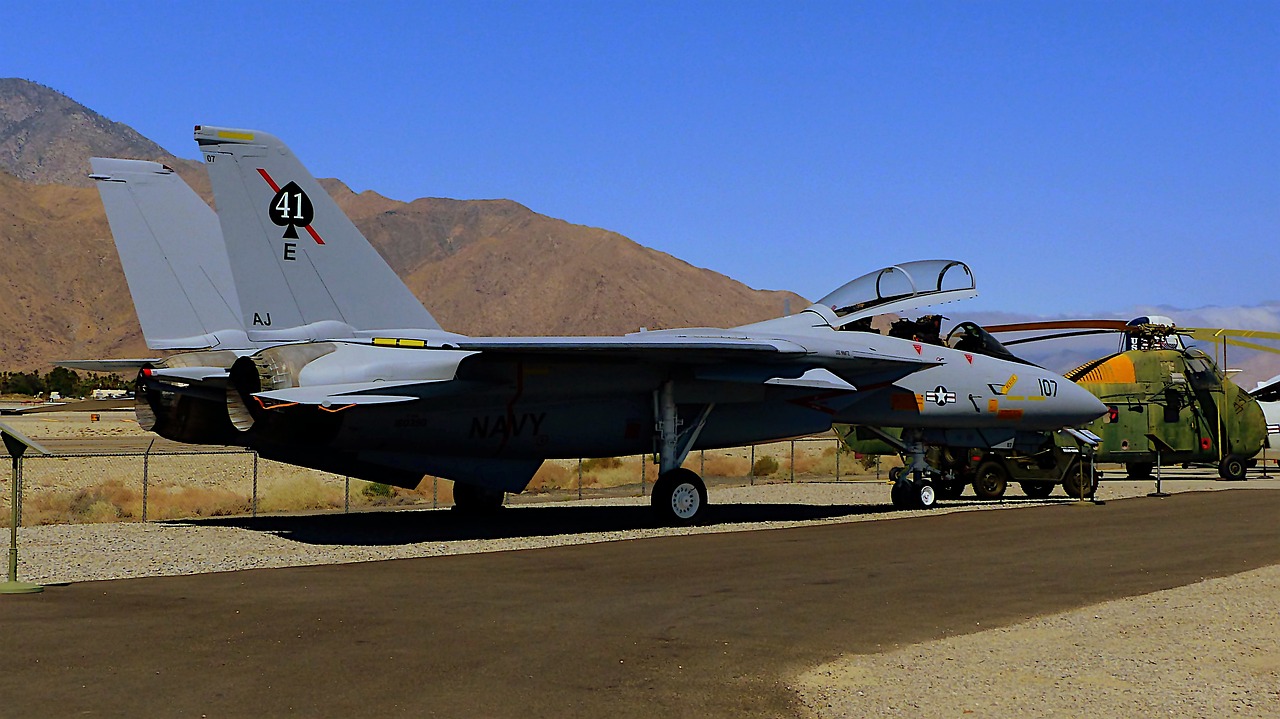
Cybersecurity Risks
The integration of AI technologies into military operations is not without its share of challenges, particularly concerning . As armed forces increasingly rely on AI for decision-making, the potential for cyberattacks grows exponentially. Imagine a battlefield where your enemy can manipulate your AI systems, turning your own strategies against you. This is not just a hypothetical scenario; it’s a reality that military leaders must grapple with as they embrace the digital age.
AI systems, while incredibly powerful, can be vulnerable to various forms of cyber threats. These vulnerabilities arise from several factors:
- Complexity of AI Systems: The intricate nature of AI algorithms can create unforeseen weaknesses that hackers may exploit.
- Data Dependency: AI systems rely heavily on data inputs, which can be tampered with or corrupted, leading to faulty outputs.
- Insufficient Security Protocols: Many military organizations are still adapting to the rapid changes in technology, which can result in outdated security measures.
As these risks become more pronounced, military organizations must prioritize the development of robust cybersecurity frameworks. This includes investing in advanced security technologies, conducting regular vulnerability assessments, and implementing rigorous training programs for personnel. Just like a fortress needs strong walls to protect against siege, military AI systems require fortified cybersecurity measures to safeguard against digital threats.
Moreover, the implications of a successful cyberattack on military AI systems can be catastrophic. Such breaches could lead to:
| Potential Consequences | Description |
|---|---|
| Operational Disruption | AI systems may fail to function, leading to chaos in military operations. |
| Data Breach | Sensitive information could be stolen or leaked, compromising national security. |
| Loss of Trust | Failure to secure AI systems can erode trust between military branches and their technological partners. |
In conclusion, as the military landscape evolves with AI, the importance of cybersecurity cannot be overstated. The stakes are high, and the consequences of inaction could be devastating. Therefore, proactive measures must be taken to ensure that these advanced technologies enhance military capabilities without exposing them to unnecessary risks.
- What are the main cybersecurity risks associated with AI in the military?
The primary risks include vulnerabilities in AI algorithms, data manipulation, and outdated security protocols. - How can military organizations mitigate these risks?
By investing in advanced cybersecurity technologies, conducting regular assessments, and providing training for personnel. - What are the consequences of a cyberattack on military AI systems?
Consequences can include operational disruption, data breaches, and a loss of trust in military technology.
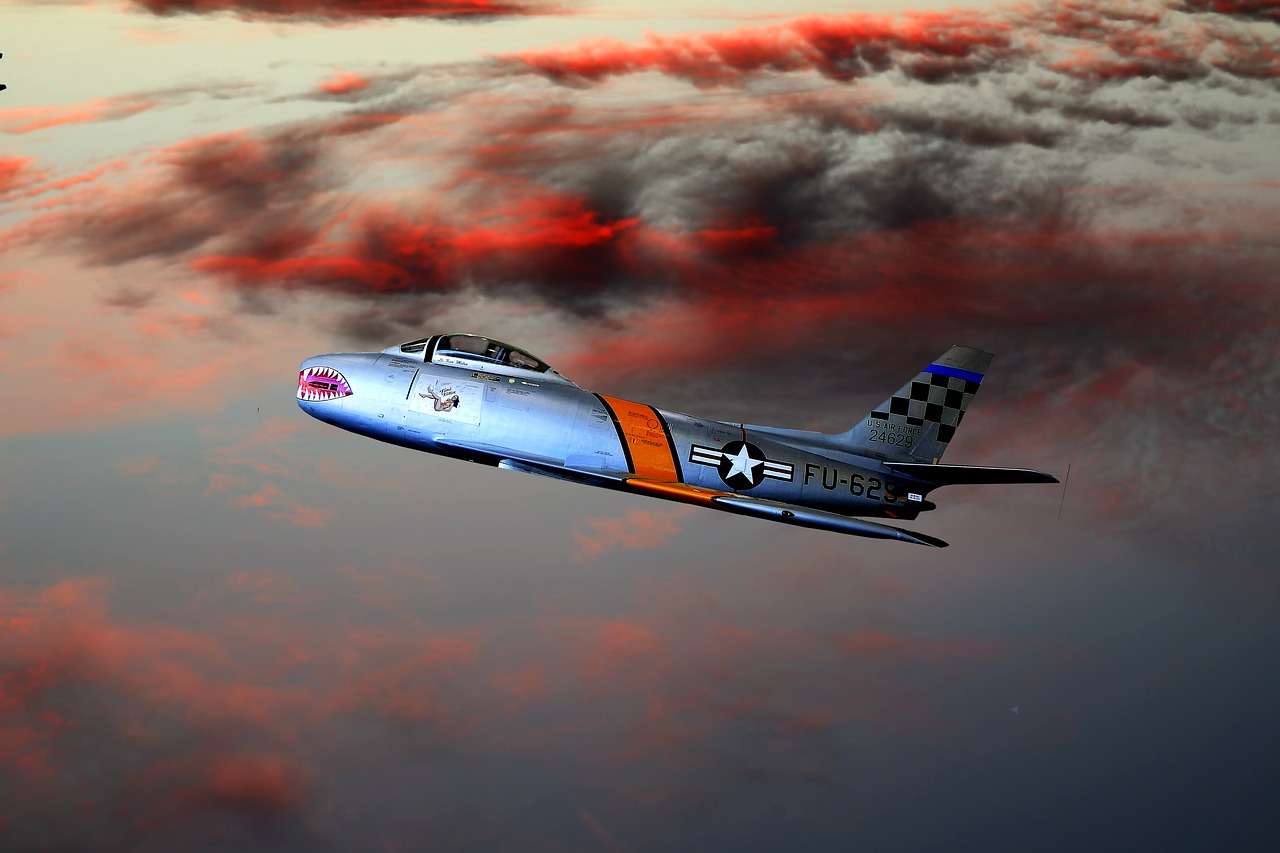
The Future of AI in Military Strategy
The future of military strategy is poised for a revolutionary transformation, largely driven by advancements in artificial intelligence. As we look ahead, it's clear that AI will not just be a tool but a fundamental component of how armed forces operate, engage in combat, and interact with both allies and adversaries. Imagine a battlefield where AI systems assist commanders in real-time, providing insights that were previously unimaginable. This isn't science fiction; it's the emerging reality of modern warfare.
One of the most significant implications of AI in military strategy is its potential to enhance decision-making processes. With AI's ability to analyze vast amounts of data rapidly, military leaders can make more informed decisions, reducing the fog of war that often clouds judgment in critical situations. For instance, AI can synthesize information from various sources—satellite imagery, reconnaissance reports, and social media—creating a comprehensive picture of the battlefield. This capability not only improves situational awareness but also enables commanders to anticipate enemy movements and devise counter-strategies effectively.
Moreover, the integration of AI into military operations can lead to a more collaborative approach among allied forces. AI systems can facilitate communication and coordination between different military branches and allied nations, ensuring that everyone is on the same page. This interconnectedness can significantly enhance operational efficiency, making joint missions smoother and more successful. Picture a scenario where forces from multiple countries collaborate seamlessly, with AI acting as the glue that holds their strategies together. This level of cooperation could change the dynamics of international military engagements.
However, the future isn't without its challenges. As AI becomes more prevalent, the need for robust cybersecurity measures will intensify. Military systems will be prime targets for cyberattacks, and any breach could have catastrophic consequences. Thus, investing in advanced security protocols will be essential to safeguard sensitive information and maintain operational integrity. The stakes are high, and the military must be proactive in addressing these vulnerabilities to harness the full potential of AI.
Looking further ahead, the ethical implications of AI in military strategy will continue to spark debate. Questions surrounding accountability and the potential for autonomous weapons systems to make life-and-death decisions without human oversight are critical. Military leaders will need to navigate these complex ethical waters carefully, ensuring that AI enhances rather than undermines the principles of warfare. The balance between leveraging technology for tactical advantages and maintaining ethical standards will be a defining feature of future military strategies.
In conclusion, the future of AI in military strategy is both exciting and daunting. The potential for improved decision-making, enhanced collaboration, and operational efficiency is immense, but it comes with significant challenges that must be addressed. As we move forward, the military must embrace AI as a vital ally in modern warfare while remaining vigilant about the ethical and security implications that accompany this powerful technology.
- What role does AI play in military decision-making? AI enhances decision-making by providing real-time data analysis, improving situational awareness, and predicting enemy movements.
- What are the ethical concerns surrounding AI in warfare? Ethical concerns include accountability for autonomous weapons, the potential for misuse, and the implications of AI making lethal decisions without human oversight.
- How can military forces protect against AI-related cyber threats? Military forces can invest in advanced cybersecurity measures, conduct regular security audits, and implement strict access controls to protect sensitive information.
- Will AI replace human decision-makers in the military? While AI will assist and enhance decision-making, human oversight will remain crucial, particularly in ethical and strategic considerations.
Frequently Asked Questions
- What is the role of AI in modern military operations?
AI plays a crucial role in modern military operations by enhancing situational awareness, automating processes, and improving strategic planning. It allows military leaders to make more informed and timely decisions, ultimately transforming how warfare is conducted.
- What are the advantages of using AI in military decision-making?
The advantages of using AI in military decision-making include increased efficiency, reduced human error, and the ability to analyze vast amounts of data quickly. This leads to better operational outcomes and more effective responses to dynamic battlefield conditions.
- How does AI enhance data analysis in military contexts?
AI enhances data analysis by processing and analyzing large datasets at incredible speeds. This capability provides military leaders with actionable insights that improve decision-making and operational effectiveness, enabling them to respond swiftly to changing situations.
- What is predictive analytics, and how is it used in combat?
Predictive analytics involves using AI to forecast potential enemy movements and outcomes. By analyzing patterns and trends, military strategists can prepare and adapt their tactics, giving them a tactical advantage in combat scenarios.
- Are there ethical concerns associated with AI in warfare?
Yes, the use of AI in warfare raises several ethical concerns, including accountability for decisions made by autonomous systems, the potential for lethal actions without human oversight, and the moral implications of using AI in combat situations.
- What cybersecurity risks are associated with AI in military systems?
As military systems increasingly rely on AI, they become more vulnerable to cyberattacks. This necessitates the implementation of advanced security measures to protect sensitive information and maintain operational integrity against potential threats.
- What does the future hold for AI in military strategy?
The future of military strategy is likely to be heavily influenced by advancements in AI. This will shape how armed forces operate, engage in combat, and interact with both allies and adversaries, potentially revolutionizing the landscape of warfare.











